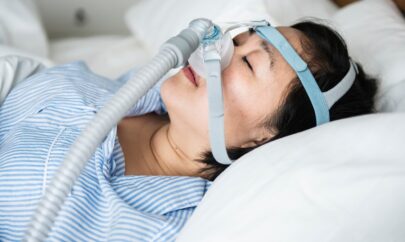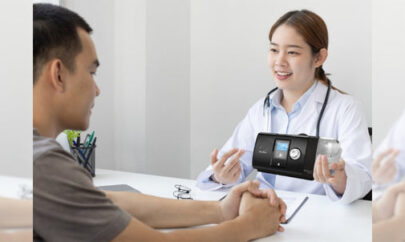
Can You Put Essential Oil in a CPAP? What Sleep Apnea Patients Should Consider
Managing obstructive sleep apnea with a CPAP (Continuous Positive Airway Pressure) device can be life-changing, but some patients wonder if

Managing obstructive sleep apnea with a CPAP (Continuous Positive Airway Pressure) device can be life-changing, but some patients wonder if

Using a CPAP machine for obstructive sleep apnea is crucial for improving your sleep and health, but it can sometimes

Choosing the right CPAP mask is essential for effective sleep apnea therapy. Ill-fitting masks can lead to discomfort, leaks, and

If you’re experiencing chronic breathing problems or fatigue, it could be linked to hypercapnia – a condition where excessive carbon

Automatic Positive Airway Pressure (APAP) titration is a valuable method for determining optimal pressure settings in people with sleep apnea.

Although CPAP is usually the first positive airway pressure device prescribed to treat obstructive sleep apnea, not everyone can tolerate

The pain and discomfort caused by arthritis can make falling asleep and staying asleep more difficult. Indeed, it is estimated

Sleep apnea is a disorder that increases the risk of developing further serious health conditions when left uncontrolled. Diagnosis

Continuous positive airway pressure (CPAP), BiPAP and APAP therapy can effectively reduce the symptoms of sleep apnea. This improves the quality of your sleep and reduces the risk of developing serious health issues linked to sleep apnea.

APAP is used to treat obstructive sleep apnea, a disorder where the airways become blocked as the muscles in the throat relax when you sleep.

Various types of PAP therapy are available to treat sleep apnea. What’s better for you when weighing up CPAP vs BiPAP vs APAP?

BiPAP is a form of ventilator that delivers air through a mask to help you breathe. It is a non-invasive treatment most associated with treating sleep apnea but can be used with other health conditions that cause breathing difficulties.

Here are some strategies to avoid moisture accumulating and dripping down into your mask if you’re experiencing CPAP rainout even with a heated hose.

A comfortable mask with a secure seal is key to sticking to your APAP, BiPAP or CPAP therapy. Learn how to maximize comfort with the Respironics Wisp nasal CPAP mask.

Everyone is different, and pressure settings on your CPAP device may not always be the same. Learn how to tailor your ResMed CPAP machine settings for more comfortable and effective sleep therapy.

Learn practical tips to make your CPAP quieter, so you can achieve peaceful and undisturbed sleep each night.